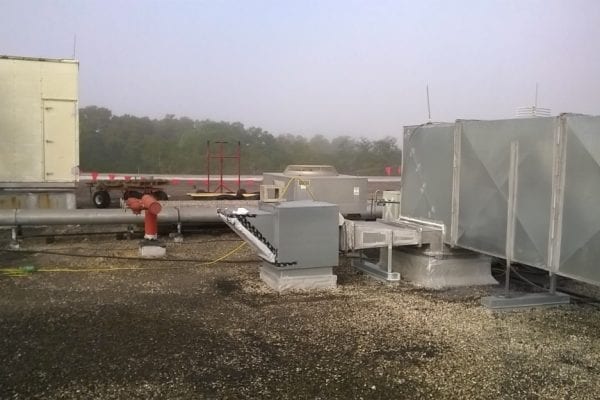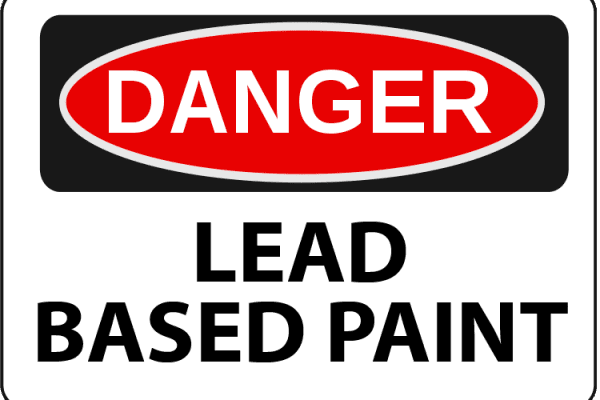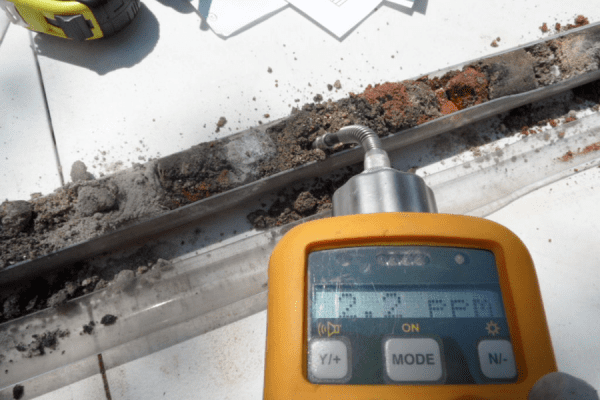A building’s HVAC (heating, ventilating, and air conditioning) system does much more than simply heat and cool. It lies at the heart of the building’s indoor air quality. When you’re having an air quality issue, whether it’s a bad odor, too much humidity, or symptoms of sick building syndrome, the HVAC system is the first place to look. Here’s what you need to know about your HVAC system’s role in indoor air quality.
How HVAC Systems Work
There are many types of HVAC systems, depending on the size of the building, but they all have the same purpose and basic functionality, and operate according to the same principles.
The primary role of the HVAC system, of course, is to provide a comfortable indoor environment. It does this by taking in fresh air from outdoors, mixing it with the building’s indoor air, conditioning it in some way (such as warming it, cooling it, or dehumidifying it), and distributing that air throughout the building. To lower the temperature, cooling systems (The AC in HVAC) pass the air over coils that contain a cooling liquid called a refrigerant, such as freon, water, or a glycol mix. This air conditioning process also removes moisture from the air, providing dehumidification, which may or may not be desired. Heating systems (The H in HVAC) are simpler, using energy to heat the air and distribute it through the building. While the heating process doesn’t directly dehumidify the air, it does decrease the relative humidity by increasing the temperature without adding humidity.
HVAC Performance Factors
Air Source
Obviously, the source of your system’s air intake affects its overall performance, and should always be investigated first when there’s an air quality problem. Mysterious odor problems can sometimes be caused by an unfortunate intake placement, such as proximity to a janitorial closet, where wet mops and cleaning agents are stored, causing chemical and/or moldy odors. Poor placement can be especially problematic in multi-use buildings. We had a client whose call center was suffering from poor air quality and mysterious odors. On investigation, we discovered that the call center’s HVAC intake was pulling air from a small engine repair shop in a different part of the building, and depositing exhaust-laden fumes into their office environment.
When air is pulled from outside, ambient conditions such as temperature and humidity also have an impact on your air quality. If the building is located in a dry climate, conditioning air can cause it to become too dry, while if your building is in a humid climate, a poorly designed HVAC system can create a cold and clammy environment. The geography and surrounding environment needs to be taken into account, and solutions will vary on factors including climate, region, urban or rural location, and whether it’s located in a residential or industrial neighborhood.
System Size
System size affects the HVAC’s ability to handle the building’s volume of air, and provide adequate ventilation, as well as cooling and heating. A system that’s too large can cause as many problems as one that is too small. Besides being expensive and inefficient, an oversized system will start up and shut off frequently, which can cause uneven temperatures, due to air not circulating as much as it would with a properly sized system. Such a system can also lead to poor humidity control, because when a space cools too fast, the HVAC system does not have a chance to remove the humidity from the air. The result is a cold, clammy environment.
An undersized system can cause even more problems. A system that’s too small may not be able to adequately cool the premises, or need to overwork to do so. Since the system is running constantly and holding onto air for too long, it can cause the air to be too dry. If occupants try to compensate for a weak system by closing off the fresh air intake, this can quickly lead to ventilation and CO2 issues. For a real-life example of how an undersized HVAC system can lead to CO2 buildup and occupant illness and even hospitalization, read our case study here.
Humidity levels can be a major cause of discomfort in an office environment. Improving employee comfort has been shown to improve performance and production, and having a properly-sized HVAC system goes a long way towards managing temperature and humidity levels.
Improper humidity levels are also a risk factor for the building itself. Air that is too dry can create a fire hazard in industrial environments, due to sparking caused by static electricity. Excess moisture can cause problems with mold growth.
Maintenance
When your HVAC removes moisture out of the air, it deposits that moisture somewhere else, typically into drain pans. These connect to drain lines, which over time can become clogged, causing water to back up into the drain pan. If your pans are not properly maintained, they will fill with stagnant water that can create mold and odor problems, or they can overflow, causing water damage. The moisture and accumulation of organic material on the cooling coils can also lead to mold problems. This can easily be avoided with routine scheduled cleanings. Proper maintenance keeps your HVAC system running smoothly.
The important thing to keep in mind is that a properly-sized HVAC system with proper maintenance is critical to ensuring high air quality in your building.
If you’re facing an indoor air quality problem in one of your buildings, you can discuss it right now with a member of one of our multi-disciplinary teams.






